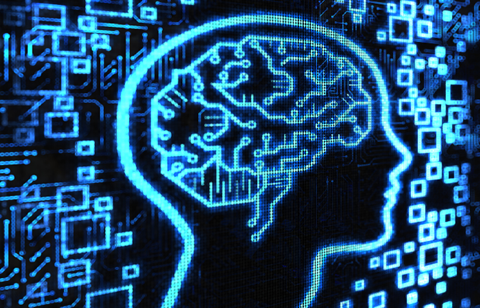
Need to know:
- Technology is transforming the methods of monitoring and managing health, both physical and mental.
- Developments benefit both employer and employee, by saving time, getting quicker diagnoses and promoting healthier lifestyles.
- Mental health support can be integrated, anonymised and normalised using apps and technology.
Following the explosion of smartphones and, more recently, wearable technology, healthcare benefits are unrecognisable today compared with a few years ago.
It is not just monitoring and diagnostics that technology is transforming, but also the methods of accessing treatment, which now include things such as video and virtual reality (VR).
In the face of these developments, how are employers harnessing the latest innovations?
Tackling mental health
With one in four individuals suffering mental health issues, it is no surprise that technology is being adapted to help employees with psychological conditions.
Abhi Chirimar, co-founder of anonymous, self-help site Instawell, says: “Stress is a huge problem at work, and people don’t always trust their employer to help; they just don’t want to talk about it at work because it may be something in their personal life.
“There’s a whole generation [of organisations that is] doing more than just paying lip service to mental health issues. Stress and depression are real killers, and [organisations] are treating mental health like physical health. They realise that the more balanced and happy you are, the more productive you are. Also, it saves time. If you think about a 45-minute counselling session, it’s far longer because you have to travel there and back and take time out of work.”
Seeing the doctor sooner
Saving time through quicker diagnosis and treatment is a key reason for the growth in video consulting and GP services in the workplace, reflecting the difficulties many employees face trying to get appointments outside of work.
David Priestley, chief digital officer of Vitality, which has launched the Vitality GP app, says: “[Apps] can match the member with a GP with a particular specialism. From the employer’s perspective, it means that staff don’t have to take time off work to visit their GP.”
Virtual reality
Some providers, such as Vitality, have also started to experiment with VR on-site, using it during employee wellness days, for health checks, blood pressure and BMI.
Xavier Palomer, chief executive officer of Psious, says: “VR is effective and saves time. With psychotherapy, you have to go weekly, which can be expensive and inconvenient.”
It is too early to say whether VR can be used to treat more chronic conditions, such as depression, says Palomer. However, results from studies taking place are promising and, with the price of headsets falling, it is perhaps one treatment to watch.
Workplace recovery
Technology is also helping employees, absent with mental health issues, get back to work by treating them as early as possible.
Vanessa Sallows, benefits and governance director of Legal and General, says: “We see a real mix of anxiety and depression, and we’re currently seeing more work stress. Sometimes, work stress can be the trigger and push them over the edge.
“By giving employees more control, you’re more likely to get better outcomes. They’re much more motivated if they can choose [between technology and face-to-face].”
Integrated healthcare and wellness programme
Employee Benefits/Health Shield Healthcare research 2018 shows that 52% of respondents offer access to either mental wellbeing or physical health apps as a core benefit for employees.
Technology can promote healthier lifestyles, though it will only be successful if the technology is popular with employees and integrated into a healthcare and wellbeing programme, including rewards and incentives.
“If it’s done well then it can be very effective, and drive better outcomes, and increase the level of engagement and wellness,” says Priestly. “If [employers] integrate this with a programme, then [it] will get more adoption.”
Rewards for healthy behaviours
Data from apps can measure heart rate or calories burnt, and points can then be attributed, to be used for discounts and rewards.
“If you marry up the technology in a simple way and offer members a simple way of doing this, you can drive and sustain healthy behaviours, and this can result in improved performance at work,” says Priestley.
“There is a connection between physical activity and reward. People really value these benefits.”
Read more...
Lanes Group's 'happy app' spots signs of mental health problems
Dr Justin Varney: Using technology as an enabler for workplace wellbeing











